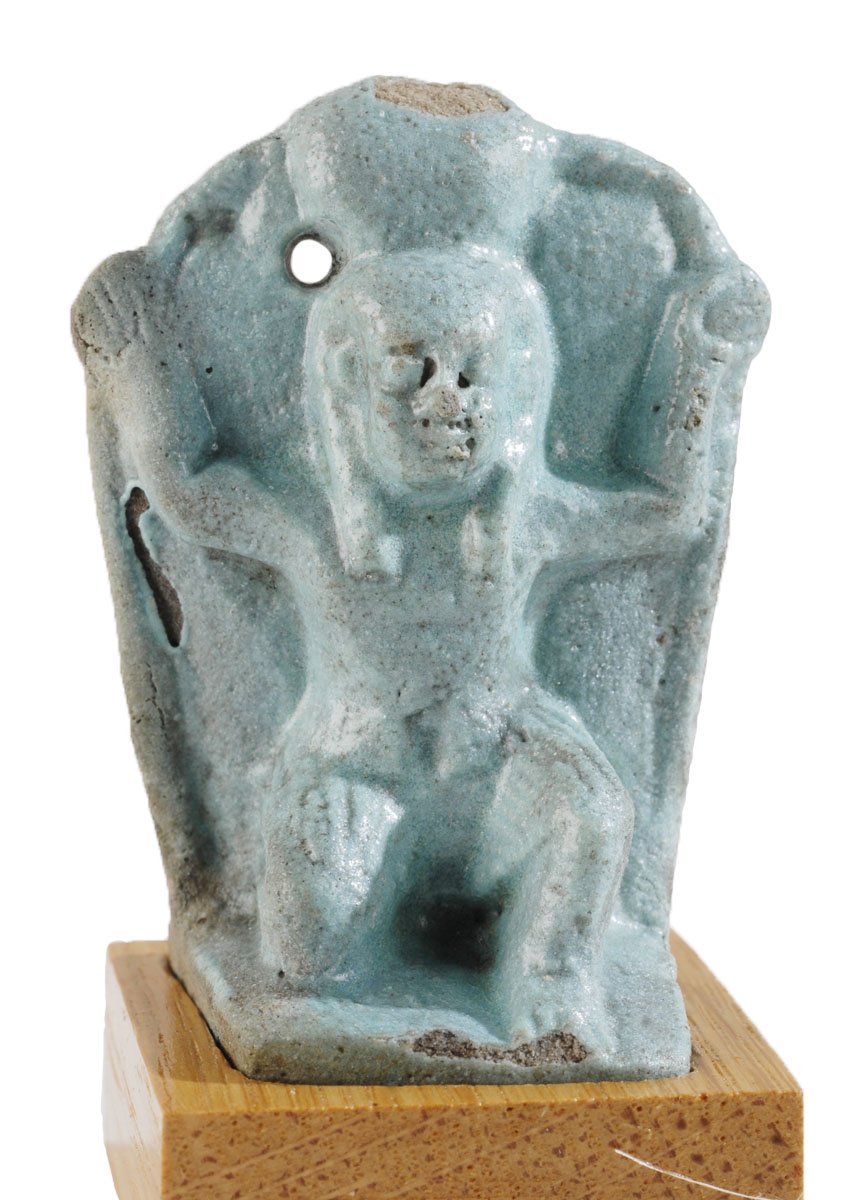
Amulet of the God Shu-Heh
Egyptian Art
| Place of production | Egypt |
|---|---|
| Date | 7th-6th centuries B.C. |
| Object type | religious or cult object |
| Medium, technique | Egyptian faience |
| Dimensions | 12.8 × 8.5 × 5.8 cm |
| Inventory number | 51.2296 |
| Collection | Egyptian Art |
| On view | Museum of Fine Arts, Basement Floor, Ancient Egypt, Temples and gods |
Both sides of the fragment represent the finely elaborated, peaceful face of Hathor attributed with a cow’s ears. She wears a wig and a richly adorned wesekh-collar. The image of the goddess is flanked by one of her additional divine manifestations referring to her destructive power, i.e., uraei, surmounted with sun discs. The handle of the object is designed in the form of a papyrus column. The material and colour of faience were associated with the regenerative symbolism linked to Hathor, who was sometimes called “Mistress of Turquoise/Malachite/Faience”. The iconography of the fragment is generally identical with the naos-shaped sesheshet sistra used in temple rituals of Hathor.
The Greek name sistrum designates a wooden or bronze ritual percussion instrument. Its typical sound was produced by the small and thin metal rings or loops on its crossbars. As one of the symbols of the goddess Hathor, it was first of all used during her temple festivals by her priestesses and female musicians of noble origin. Music and dance to which erotic meaning and regenerative power were attached played an important role in the temple feasts of Hathor. According to the Egyptian concept, the pleasing sound of the sistrum could pacify Hathor, who was notorious for her destructive rage and could ward off evil forces in order to maintain or cyclically renew the world order.
The Egyptian name – sesheshet – is an onomatopoeic word, which not only drew attention to the pleasant sound of the instrument but also evoked the sound of rustling papyrus reeds.
Many similar faience sistra were donated by pious believers of the goddess as votive offerings to various Hathor sanctuaries. Perhaps this object also had a votive function. However, the papyrus column upon which the Hathor-head is placed did not belong to the usual iconography of the sistra. Therefore, it is possible that the object was not a fragment of a votive sistrum, but, instead, can be identified as a ritual Hathor-emblem, also used in her temple cults.
This record is subject to revision due to ongoing research.